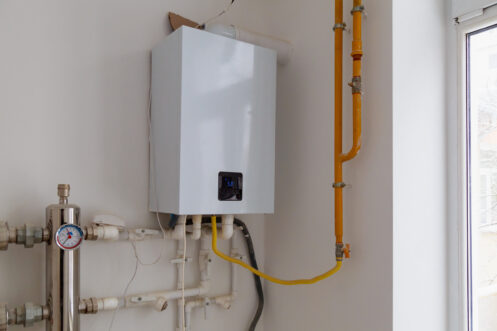Important Maintenance Tips for Your Home's Hot Water System
Important Maintenance Tips for Your Home's Hot Water System
Blog Article
Just about every person will have their unique perception when it comes to Tips For Maintaining Your Hot Water Heater.

Warm water is important for everyday convenience, whether it's for a revitalizing shower or washing meals. To guarantee your warm water system runs efficiently and lasts longer, routine upkeep is key. This article offers functional tips and insights on exactly how to preserve your home's warm water system to stay clear of disruptions and expensive repair services.
Intro
Keeping your home's warm water system might appear challenging, but with a couple of simple actions, you can ensure it operates efficiently for several years ahead. This overview covers whatever from comprehending your warm water system to do it yourself upkeep tips and recognizing when to contact expert assistance.
Relevance of Preserving Your Warm Water System
Normal upkeep not just expands the lifespan of your hot water system yet additionally guarantees it runs effectively. Overlooking maintenance can lead to decreased efficiency, greater power expenses, and even premature failing of the system.
Indicators Your Hot Water System Requirements Maintenance
Knowing when your warm water system requires interest can avoid major concerns. Watch out for indications such as inconsistent water temperature level, unusual sounds from the heating unit, or rustic water.
Recognizing Your Warm Water System
Before diving into upkeep tasks, it's useful to recognize the standard components of your hot water system. Generally, this includes the water heater itself, pipelines, anode poles, and temperature level controls.
Month-to-month Upkeep Tasks
Routine regular monthly checks can aid capture small problems prior to they rise.
Purging the Water Heater
Flushing your hot water heater eliminates sediment build-up, boosting effectiveness and extending its life.
Checking and Changing Anode Rods
Anode poles avoid corrosion inside the tank. Evaluating and replacing them when broken is important.
Inspecting and Readjusting Temperature Settings
Readjusting the temperature level settings ensures optimum performance and safety.
Do It Yourself Tips for Upkeep
You can perform numerous maintenance jobs on your own to keep your warm water system in top condition.
Checking for Leakages
Consistently examine pipes and links for leaks, as these can bring about water damages and higher costs.
Evaluating Stress Alleviation Valves
Testing the stress relief valve guarantees it works correctly and stops extreme pressure accumulation.
Shielding Pipes
Shielding hot water pipes minimizes heat loss and can save energy.
When to Call a Specialist
While DIY upkeep is useful, some concerns call for professional experience.
Facility Problems Calling For Specialist Aid
Examples include significant leakages, electrical problems, or if your hot water heater is continually underperforming.
Routine Expert Maintenance Advantages
Specialist upkeep can include extensive assessments, tune-ups, and ensuring compliance with security standards.
Conclusion
Regular maintenance of your home's warm water system is necessary for performance, longevity, and expense savings. By following these pointers and knowing when to look for specialist help, you can make sure a trustworthy supply of hot water without unforeseen interruptions.
How to Maintain an Instant Hot Water Heater
Before tinkering with your hot water heater, make sure that it’s not powered on. You also have to turn off the main circuit breaker and shut off the main gas line to prevent accidents. Also turn off the water valves connected to your unit to prevent water from flowing into and out of the appliance. 2. When you’re done, you have to detach the purge valves’ caps. These look like the letter “T†and are situated on either side of the water valves. Doing so will release any pressure that has accumulated inside the valves while at the same time avoid hot water from shooting out and burning your skin. 3. When the purge valves’ caps are removed, you have to connect your hosing lines to the valves. Your unit should have come with three hoses but if it didn’t, you can purchase these things from any hardware or home repair shops. You can also get them from retail stores that sell water heating systems. Read the user’s manual and follow it to complete this task properly. When the hosing lines are connected, open the purge port’s valves. 4. You should never use harsh chemical cleaners or solutions when cleaning your unit. Make use of white vinegar instead. It should be undiluted and you’ll probably use about 2 gallons. 5. Now flush your water heater. This task should probably take about 40 minutes. We can’t give you specific directions for this because the procedure is carried out depending on the type, model and brand of your heater. With that being said, refer to the user’s manual. 6. When you’re done draining the unit, you have to turn off the purge port valves again. Remove the hosing lines that you earlier installed on each of the water valves. Put the valve caps (purge port) back in their respective places and be very careful so as not to damage the rubber discs that are found inside these caps. 7. Now that everything’s back in place, check your user’s manual again to find out how to reactivate your water heating system. 8. Once it is working, turn one of your hot water faucets on just to let air pass through the heater’s water supply pipes. Leave the tap on until water flows smoothly out of it. https://www.orrplumbing.com/blog/2014/september/how-to-maintain-an-instant-hot-water-heater/

As a fervent reader about What Kind of Maintenance Do Water Heaters Need?, I thought sharing that piece of content was really helpful. Kindly take the time to distribute this blog if you enjoyed reading it. Thanks so much for taking the time to read it.
Get A Quote Report this page